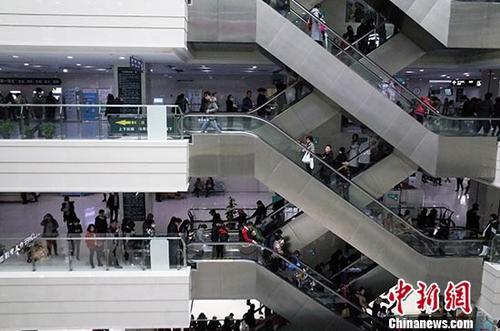China News Service, December 28. According to the website of the National Health Commission, the National Health Commission recently issued the "Third-level Hospital Evaluation Standards (2020 Edition)" (hereinafter referred to as the "Standards"). The "Standards" has 3 parts and 101 sections. Set 448 standards and monitoring indicators.
On the basis of maintaining the continuity of the 2011 version of the standard, it incorporates the relevant content of the laws, regulations, and rules promulgated and implemented in recent years, as well as the reform requirements for the construction of a hierarchical diagnosis and treatment system, and a modern hospital management system, and adds relevant requirements for the normalized prevention and control of the new crown pneumonia epidemic. .
Data map: hospital.
Photo by China News Agency reporter Yin Liqin
At the same time, the "Standard" increased the proportion of hospital resource allocation, quality, safety, service, performance and other indicators monitoring, as well as DRG evaluation, single disease quality control and key medical technology and other daily monitoring data, to guide local authorities to conduct on-site inspections and subjective qualitative , The review mode based on centralized inspection shifts to the review work mode that combines daily monitoring, objective indicators, on-site inspection, qualitative and quantitative.
On the one hand, guide medical institutions to pay attention to daily quality management and performance, and reduce surprise and welcome inspection behavior; on the other hand, minimize subjective bias and enhance the objectivity of review results.
There are a total of 183 items in 24 sections in the "Standard", which is significantly reduced compared to the 354 items in 66 sections of the 2011 version of the standard.
On the one hand, it comprehensively sorts out and integrates the repetitive clauses in the original standard to improve work efficiency; on the other hand, it eliminates or adjusts the clauses in the original standard that are not very operative or can replace on-site inspection with daily data monitoring to improve the standard. Operability.
It is reported that the "Standard" fully draws on the working methods and standards of some international hospital evaluation agencies, adopts the good experiences and practices of some domestic provinces and cities, and is more compatible and compatible with the advanced concepts of international and domestic evaluation and evaluation management.
According to the news, the "Standard" is the main basis for the evaluation of tertiary hospitals in various regions.
All provincial health administrative departments shall, based on the focus of current medical and health work, combine with local characteristics, and follow the principle of “standards only increase but not decrease, and content only increase but not decrease”, and make appropriate supplements to the “standards” and report to our committee for the record and strengthen "Standard" training to enhance the awareness and implementation effect of "Standard".
In addition, medical institutions must focus on the standards, strengthen daily management, and give full play to the role of the "standards" in guiding the hospital's self-management and healthy and sustainable development. At the same time, we will continue to strengthen informatization, and timely, complete, and accurately submit key professional quality control indicators, single disease quality control and other data and information specified in the "standard" as required to lay the foundation for the institution to participate in hospital review.

